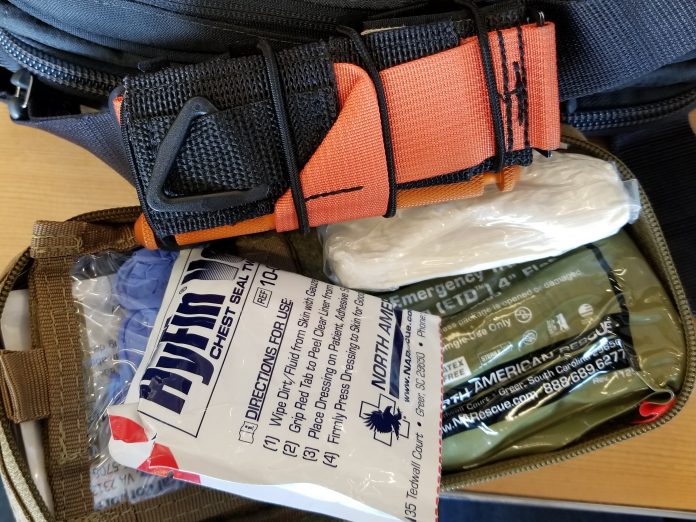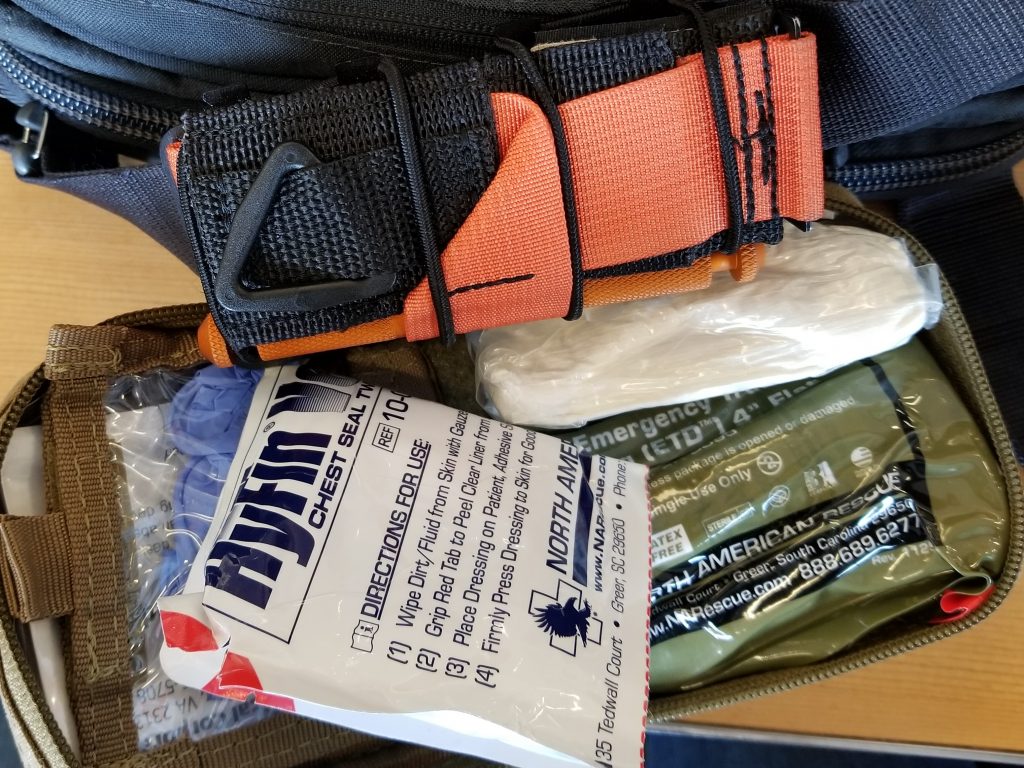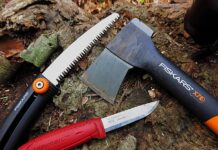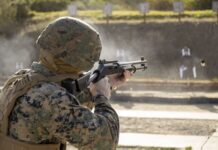

Medical is one of the hot topics in the self-defense training industry. With mass shootings, vehicle attacks on pedestrians, and other violent events in the news constantly, it’s becoming an increasingly popular topic everywhere else too. Carrying a gun or other weapons isn’t for everyone whether for legal or other reasons. Having the knowledge and tools for first aid? There are no restrictions on owning and carrying first aid supplies. You should join the crowds who are adding medical training and equipment to your life. Here’s why.
When Seconds Count…
It’s not just armed response that is minutes away at best. It’s also any chance of medical intervention in the moments that matter after a violent injury or even common yet major health events like allergic reactions, heart attacks, and strokes. If you are prepared to be the person on the spot in your fantasy of saving a crowd from a mass shooter, you should also be prepared to be the person on the spot with the higher likelihood event of an injury or illness that requires immediate help. The standard of care is fifteen seconds to get a tourniquet on to control massive hemorrhagic bleeding. And if it’s you leaking blood, you might want to get on it yourself.
Do Something!
Nobody likes to feel helpless. Interventions as simple as direct pressure can control blood loss long enough to make a difference. And even if it doesn’t, knowing how and being able to take action means you were able to try. You were able to do more than stand by and watch someone die. That’s not something I can live with, and it’s something you should think about before you skip yet another opportunity to take a first aid class.
If I Can, You Can
One of the beauties of medical training is that many immediate first responder techniques can be easily learned by anyone. You don’t have to wait for a class to fit into your schedule either. A few minutes with a YouTube video can get you started. A quality in-person class like Bleeding Control is only a few hours and covers all of the basics.
Much of what’s useful for equipment is both affordable and easily carried. You don’t need to plan to improvise when a CoTCCC recommended tourniquet is $30 from a reputable supplier, can be carried in a back pocket, and is proven effective. My SOFTT-W goes almost everywhere with me and if I’ve figured out how to do that, a little creativity on your part will get you there too.
Sh!t Happens
It’s not unusual to focus on gunshot wounds as a leading cause for needing medical help right away. They’re not the only reason why first aid is needed in everyday life. Even in the sexy trauma first aid realm, where we get to use tourniquets, slap on chest seals, and shove hemostatic dressings into holes, there are many other reasons why we might have to get to work.
How many of you work around heavy machinery? Factories are one thing, but limb-crushing injuries can happen at construction sites, warehouses, work yards…you get the idea. How about motorcycles? Even if you don’t ride, pay attention to who you’re sharing the road with on the next warm day. Now think about what might happen if a leg gets trapped between bike and car or asphalt. If a big piece of debris is kicked up by a passing car or flies out of a truck bed and spikes itself into a rider, or even a pedestrian.
And those are just the bloody injuries or the blunt force traumas. They’re not the only things that go wrong. For instance, do you have a child or co-worker who is allergic to bees, peanuts, something else? Anaphylactic shock is deadly, sometimes in minutes. Knowing where an Epi-Pen is and how to administer it can save a life.
IT SAVES LIVES
We’ve learned some hard-won lessons from the War on Terror, and we can respect them by not allowing people to die from preventable causes. In the Tactical Combat Casualty Care – All Combatants class I recently took, one of my instructors was living proof that what we were learning that day works. He couldn’t stand in front of us because both of his legs were traumatically amputated in Afghanistan. Two CAT tourniquets saved his life with minimal blood loss. His story is worth a few minutes of your time:
We would like to offer our profound thanks to Adam Hartswick and the crew of DUSTOFF 68 for sharing their story and hope that it will inspire and educate as many people as possible so that more lives are saved in the future. ***Be aware that the following footage from the incident is GRAPHIC.Sgt. Adam Hartswick was deployed to Afghanistan with 3-41 Infantry, Alpha Company, when his life was forcefully altered by a devastating attack on his unit May 14, 2013. "I was the company senior medic (68W) responding to an attack on our second platoon," Adam said, recalling that day. “I wasn’t even supposed to go outside the wire that day. I had guard duty, but when I heard that my guys had been hit – I had to go.” Adam jumped into the back of a responding QRF vehicle and rushed to aid his teammates."When I arrived at the scene I immediately discovered that my junior platoon medic, SPC Cody Towse and two other Soldiers were dead.” After the initial explosion, Cody had rushed to aid SPC William Gilbert and SPC Mitch Daehling. William had been killed instantly in the blast, but Mitch was still alive and critically injured. As Cody attempted to treat Mitch, he placed his med ruck on the ground and triggered a second device that killed them both instantly. Cody was posthumously recognized for his heroism and awarded the Bronze Star. Arriving on scene with the QRF, Adam worked to set up his CCP and treat the wounded."I was doing human-remains recovery and treating the walking-wounded when the [Explosive Ordnance Disposal (EOD)] team showed up," he continued. "The EOD team leader Sgt. 1st Class Jeff Baker came up to me and put his hand on my shoulder, looked me in the eye, and calmly told me, ‘We’re going to save our brothers.’ Moments later he went to interrogate a device and it blew up, killing him about ten meters in front of me." Adam suffered minor injuries from that explosion but was able to continue his medic duties."I shook that off and went to retrieve him when I was blown up," he said. “It felt like I got hit by a truck! My body was ringing like a tuning fork, but I was still conscious, so I treated myself. I was able to get one CAT (tourniquet) on good and tight but I was missing an index finger and putting that TQ was the hardest thing I’ve ever done. Thankfully the platoon leader was competent in TCCC and came to me (in spite of the danger of other IEDs) and applied a second CAT on my other leg and reassessed and tightened my initial tourniquet.” The blast from the IED had critically wounded Adam. “My body was a wreck – I had: bilateral transfemoral amputations, right index finger amputation, partial right thumb amputation, large lacerations on right arm, bilateral perforated eardrums, fractured right hip, mild TBI, various shrapnel wounds, and bruises all over my arms and legs. Somehow I had no torso trauma, no facial trauma.” In what would later be recognized as the 2013 Dustoff Rescue of the Year, DUSTOFF 68, C/2-3 GSAB, Hunter AAF, GA (CPT Douglas Hill, 1LT Kelly Ward, SGT Robert Silva, SGT Jason Daniels, and SGT David Hixson), plucked Adam and a wounded teammate from the IED strewn battlefield and raced them to Role 3 care. Remarkably, despite having both legs being traumatically amputated, Adam remained conscious without any pain management until he reached the Role 3 OR where he continued to joke with nurses until he was anesthetized.Six days later, Adam was back in the United States at Walter Reed Medical Center recovering from his injuries. Adam’s father, himself career Army, slept in a chair next to his son’s bed for the weeks that it took Adam to fight his way out of intensive care. Today, ever thankful for his second chance, Adam works tirelessly to spread the TCCC gospel through his role as a TCCC instructor with Techline Trauma. As Adam puts it, “Every gunfighter needs to be trained to be a medic and every medic needs to be trained to be a gunfighter.”Reposted from North American Rescue.
Posted by Stay The Course on Thursday, March 23, 2017
After watching that, I couldn’t look Adam in the eye and not be a true believer in the value of quality medical training and equipment. How about you?



